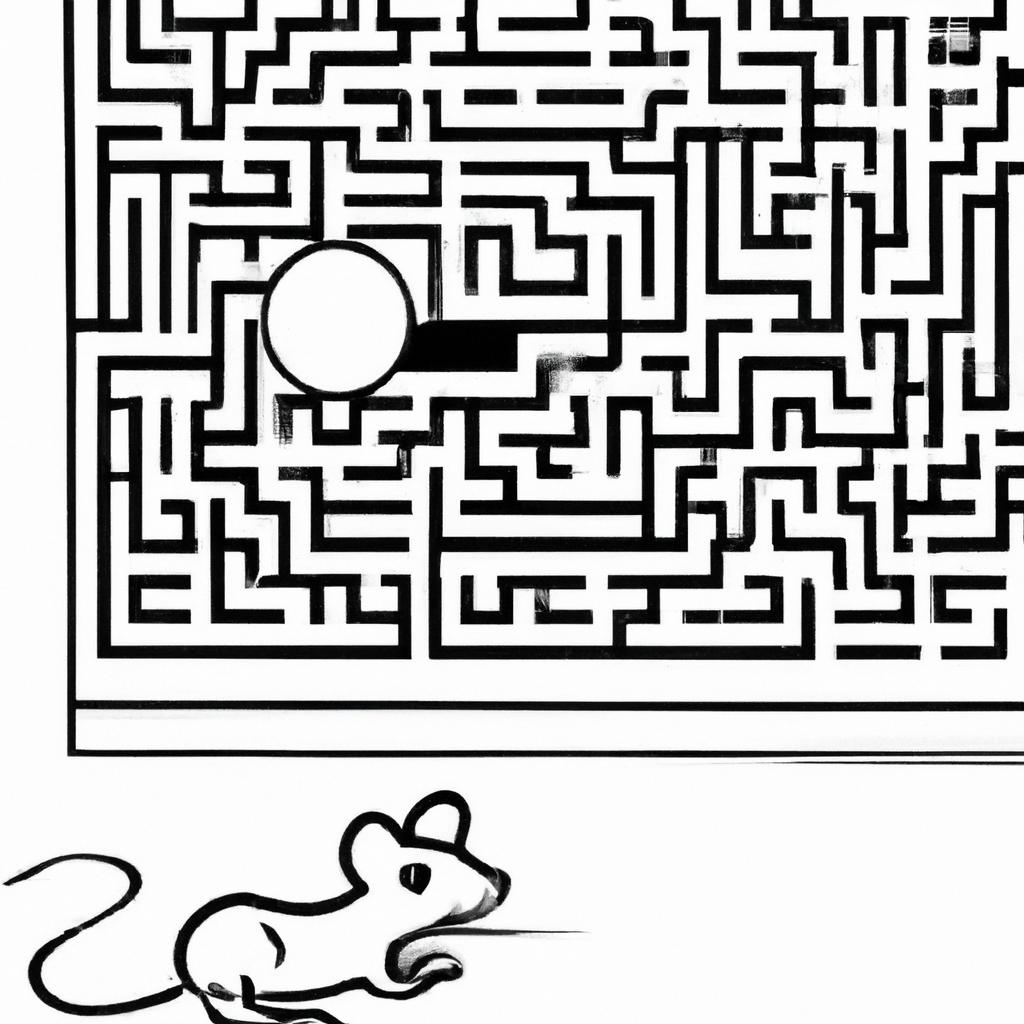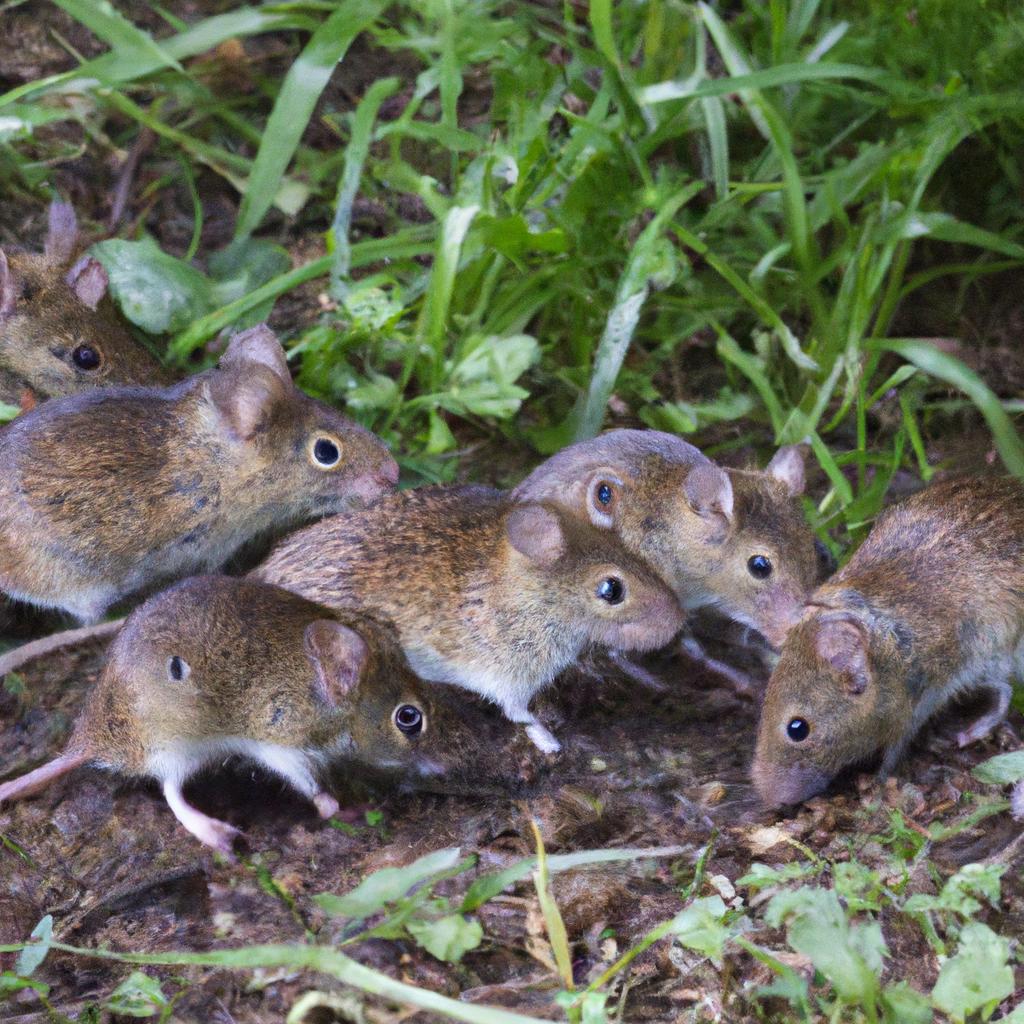Evolution is a fundamental concept in biology that explains how organisms change over time. One way to observe evolution is by studying mouse populations. Mice are fascinating creatures that have adapted to different environments and evolved over millions of years. In this article, we will explore the importance of observing evolution in mouse populations and how it can be done.
Observing evolution in mouse populations is crucial as it helps us understand how organisms adapt to changing environments. Mice are a perfect example of this as they have evolved to different habitats, including deserts, forests, and urban areas. By studying mouse populations, we can see how genetic changes occur in response to environmental pressures.
Moreover, observing evolution in mouse populations can provide us with insights into the evolution of other organisms, including humans. Mice share many genetic similarities with humans, making them an ideal model organism for studying genetics and evolution.
In this article, we will discuss various techniques for observing evolution in mouse populations, including experimental techniques, field observations, and computer modeling. We will also explore case studies of mouse populations and comparative studies with other species. By the end of this article, you will have a comprehensive understanding of how evolution can be observed in mouse populations and its significance for biology and genetics research.
The Concept of Evolution

Evolution is the process by which species change over time due to genetic variation and natural selection. It is a fundamental principle in biology that explains how organisms adapt to their environment.
A. Definition of Evolution
Evolution is defined as the gradual process by which the genetic makeup of a population changes over time. It occurs due to genetic mutations, changes in allele frequencies, and natural selection. It is important to note that evolution occurs at the population level and not at the individual level.
B. The Theory of Natural Selection
The theory of natural selection was first proposed by Charles Darwin in the mid-19th century. It states that individuals within a population vary in their traits, and those with advantageous traits are more likely to survive and reproduce. Over time, the frequency of these advantageous traits increases within the population, leading to evolution.
C. Historical Perspectives on Evolution
The concept of evolution has a long and complex history. It was first proposed by ancient Greek philosophers such as Empedocles and Aristotle. However, it was not until the 19th century that the theory of evolution gained widespread acceptance. Charles Darwin’s book “On the Origin of Species” was a groundbreaking work that presented evidence for evolution and natural selection.
In conclusion, the concept of evolution is a fundamental principle in biology that explains how organisms change over time. Understanding the definition of evolution, the theory of natural selection, and the historical perspectives on evolution is crucial for observing evolution in mouse populations and other organisms.
Observing Evolution In Mouse Populations

A. The Role Of Genetics In Evolution
Genetics plays a critical role in the process of evolution. Genetic changes in an organism’s DNA can result in new traits that can be passed down to future generations. In mouse populations, genetic variation is the basis for adaptation to changing environments. One of the ways to observe evolution in mouse populations is by studying genetic changes over time.
Recent advances in genetics have enabled researchers to study the genetic basis of adaptation in mouse populations. By comparing the genomes of mice from different environments, researchers can identify genes that are responsible for adaptation to specific habitats. This approach has led to the discovery of genes involved in various traits, such as coat color, immunity, and behavior.
B. Factors That Influence Mouse Populations
Mouse populations are influenced by several factors, including environmental conditions, predation, and competition for resources. These factors can drive natural selection, leading to changes in the genetic makeup of mouse populations. For example, in urban areas, mice have evolved to be more resistant to toxins found in human waste and pollution.
C. Evidence Of Evolution In Mouse Populations
Evolutionary changes can be observed in mouse populations through various methods, including morphological, physiological, and behavioral changes. For instance, urban mice have shorter tails and larger ears than their rural counterparts, enabling them to navigate through tight spaces and detect predators in noisy environments.
Moreover, researchers can study the frequency of genetic variations in mouse populations over time to detect evolutionary changes. For example, a study of house mice in the UK found that the frequency of a gene involved in immunity had changed over time, likely due to selective pressure from pathogens.
In conclusion, observing evolution in mouse populations is essential for understanding the genetic basis of adaptation to changing environments. By studying the role of genetics, factors that influence mouse populations, and evidence of evolution in mouse populations, we can gain insights into the process of evolution and its impacts on organisms.
Techniques for Observing Evolution in Mouse Populations

Observing evolution in mouse populations can be done using various techniques, including experimental techniques, field observations, and computer modeling. Each method has its advantages and disadvantages, and researchers often use a combination of techniques to gain a comprehensive understanding of evolution in mouse populations.
A. Experimental Techniques
Experimental techniques involve manipulating the environment or genetics of mouse populations to observe changes in their evolution. For example, researchers may expose mice to different temperatures or food sources to observe how these changes affect their genetics over time. Another experimental technique is the use of genetic engineering, where researchers manipulate mouse genomes to study how genetic changes affect evolution.
B. Field Observations
Field observations involve observing mouse populations in their natural habitats. Researchers may track mouse populations over time, record their behaviors, and collect samples for genetic analysis. Field observations provide a comprehensive understanding of how mouse populations interact with their environment and how environmental pressures affect their evolution.
C. Computer Modeling
Computer modeling involves creating virtual simulations of mouse populations to study their evolution. These models provide researchers with a powerful tool to test hypotheses and predict the outcomes of different evolutionary scenarios. Computer modeling can help researchers understand complex interactions between genetics, environment, and evolution and provide insights into the future of mouse populations.
In conclusion, observing evolution in mouse populations requires a combination of experimental techniques, field observations, and computer modeling. Each technique provides unique insights into evolution, and researchers often use a combination of these methods to gain a comprehensive understanding of mouse populations’ evolution. These techniques are crucial for understanding the mechanisms behind evolution and its implications for biology and genetics research.
Examples of Observing Evolution in Mouse Populations
Studying mouse populations has provided us with several examples of evolution in action. Here are some case studies that highlight how observing mouse populations has contributed to our understanding of evolution:
Case Studies of Mouse Populations
One well-known example of evolution in mouse populations is the case of the deer mouse and the rock pocket mouse. These two species live in different habitats, with the deer mouse living in the forest and the rock pocket mouse living in rocky areas. The deer mouse has a brown coat, while the rock pocket mouse has a lighter coat that matches the color of the rocks in its habitat.
Researchers have found that the coat color of these two species is controlled by a single gene, with the dominant allele in the deer mouse producing brown coats, and the recessive allele in the rock pocket mouse producing a lighter coat. This difference in coat color has evolved due to the different selection pressures in their respective habitats. The brown coat of the deer mouse provides camouflage in the forest, while the lighter coat of the rock pocket mouse provides camouflage on the rocks.
Comparative Studies with Other Species
Comparative studies between different mouse populations and with other species have also provided insights into evolution. For example, researchers have compared the genome of the house mouse (Mus musculus) with that of the white-footed mouse (Peromyscus leucopus), which is a closely related species that lives in a different habitat. They found that the house mouse genome has undergone rapid evolution in response to human activities, such as the introduction of agriculture and the development of urban areas.
Long-Term Studies
Long-term studies of mouse populations have also provided important insights into evolution. For example, a study of a population of wild mice in Illinois found that the frequency of a particular allele for a gene that controls coat color changed over time. The allele became more common during a period of drought, as it provided better camouflage in the dry, brown environment. However, when the environment became wetter again, the frequency of the allele decreased.
These case studies and comparative and long-term studies demonstrate the importance of observing mouse populations for understanding evolution. By studying mouse populations, we can gain insights into how organisms adapt to changing environments and how genetic changes occur over time.
Conclusion
In conclusion, observing evolution in mouse populations is a vital aspect of biology and genetics research. By studying mouse populations, we can observe how organisms adapt to changing environments and how genetic changes occur in response to environmental pressures. Mice are an ideal model organism for studying genetics and evolution as they share many genetic similarities with humans.
Various techniques can be used for observing evolution in mouse populations, including experimental techniques, field observations, and computer modeling. Case studies of mouse populations and comparative studies with other species can provide us with insights into the evolution of other organisms, including humans.
As we have seen, evolution can be observed in mouse populations, and understanding this concept is essential for developing new treatments for diseases and improving our general understanding of biology. Mouse populations are vital for research, and their significance cannot be overstated.
If you are interested in learning more about mouse populations and evolution, visit mousefaqs.com. Our website provides comprehensive resources and information on mice and their evolution. Thank you for reading this article, and we hope it has been informative and engaging.


